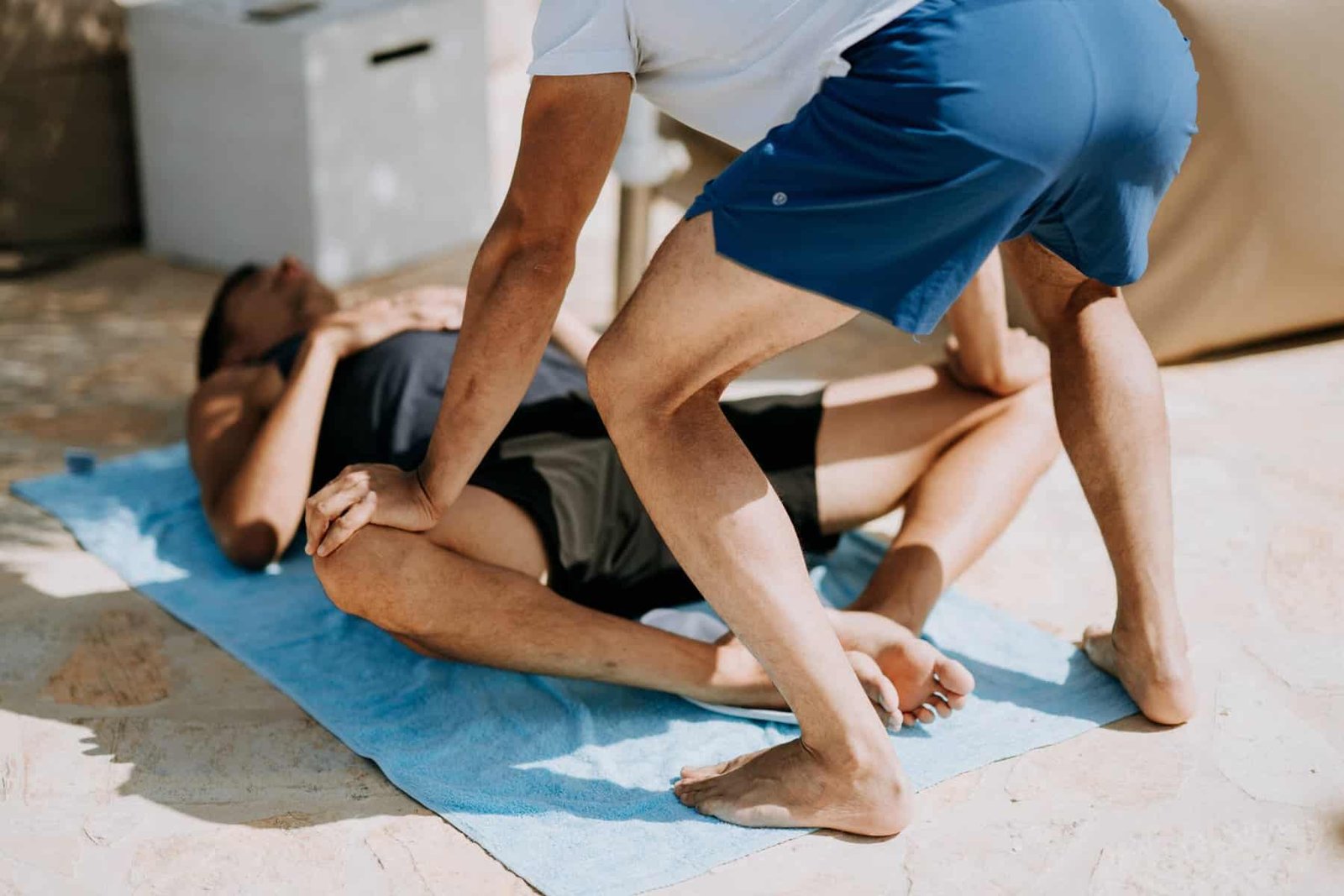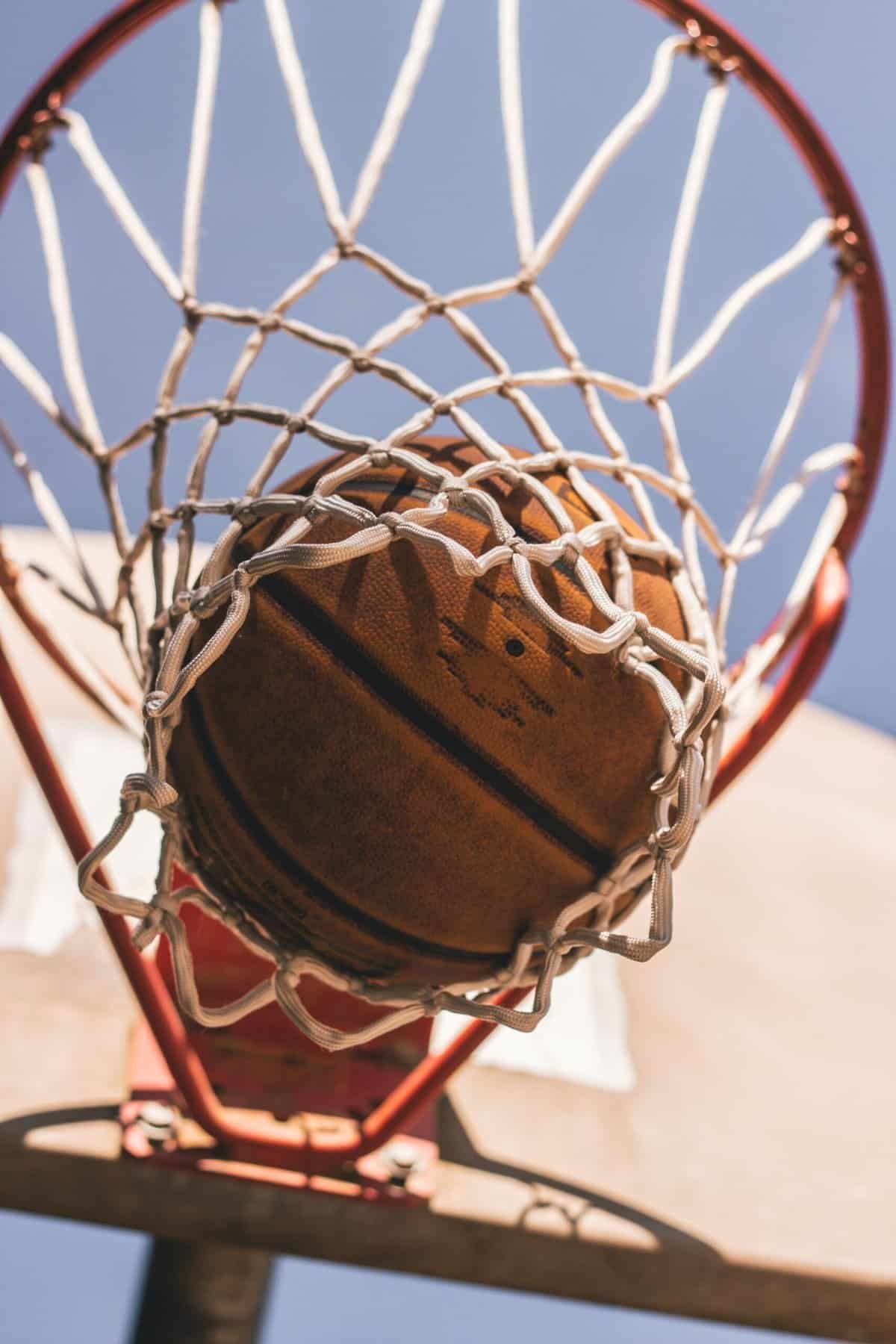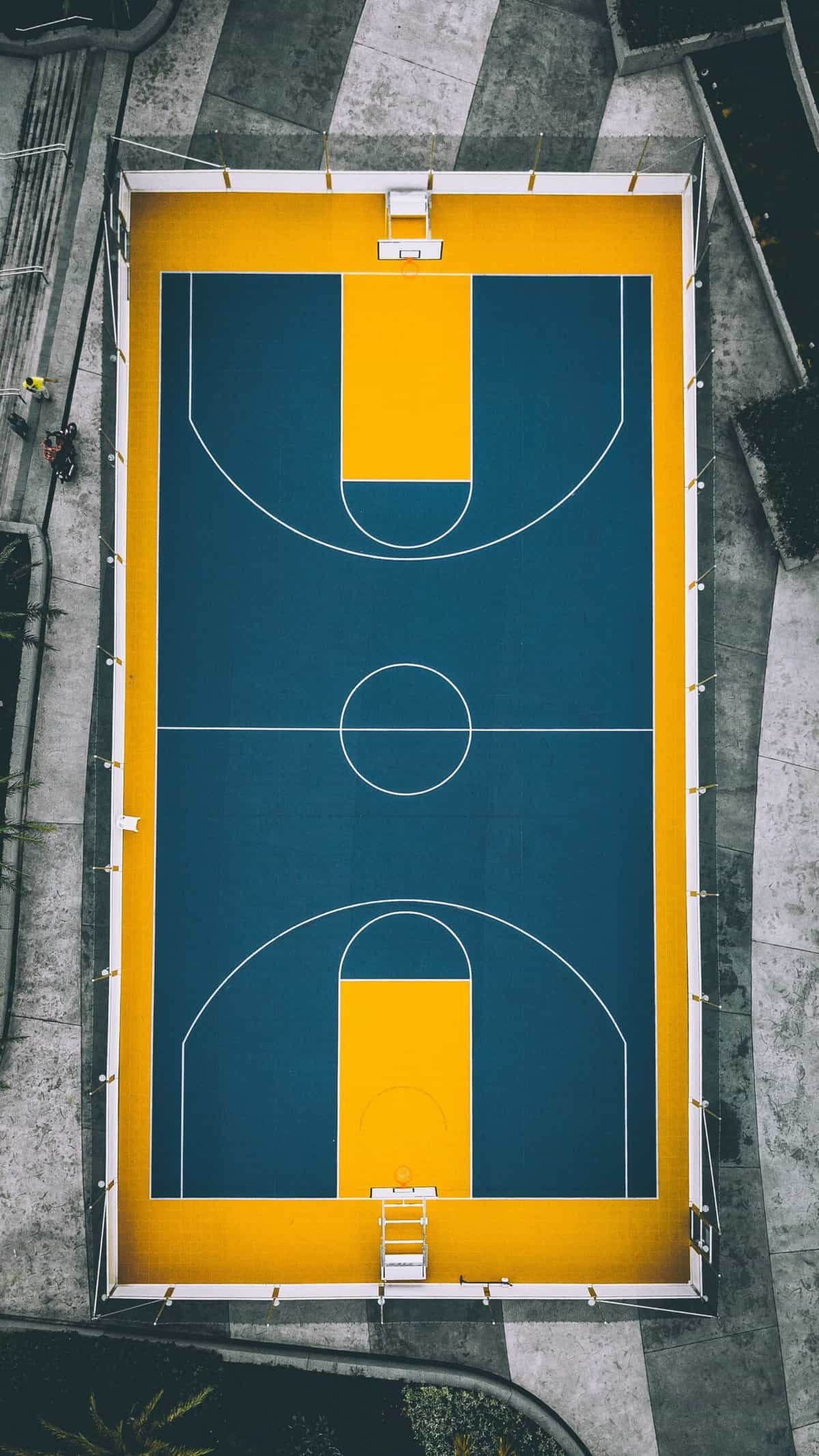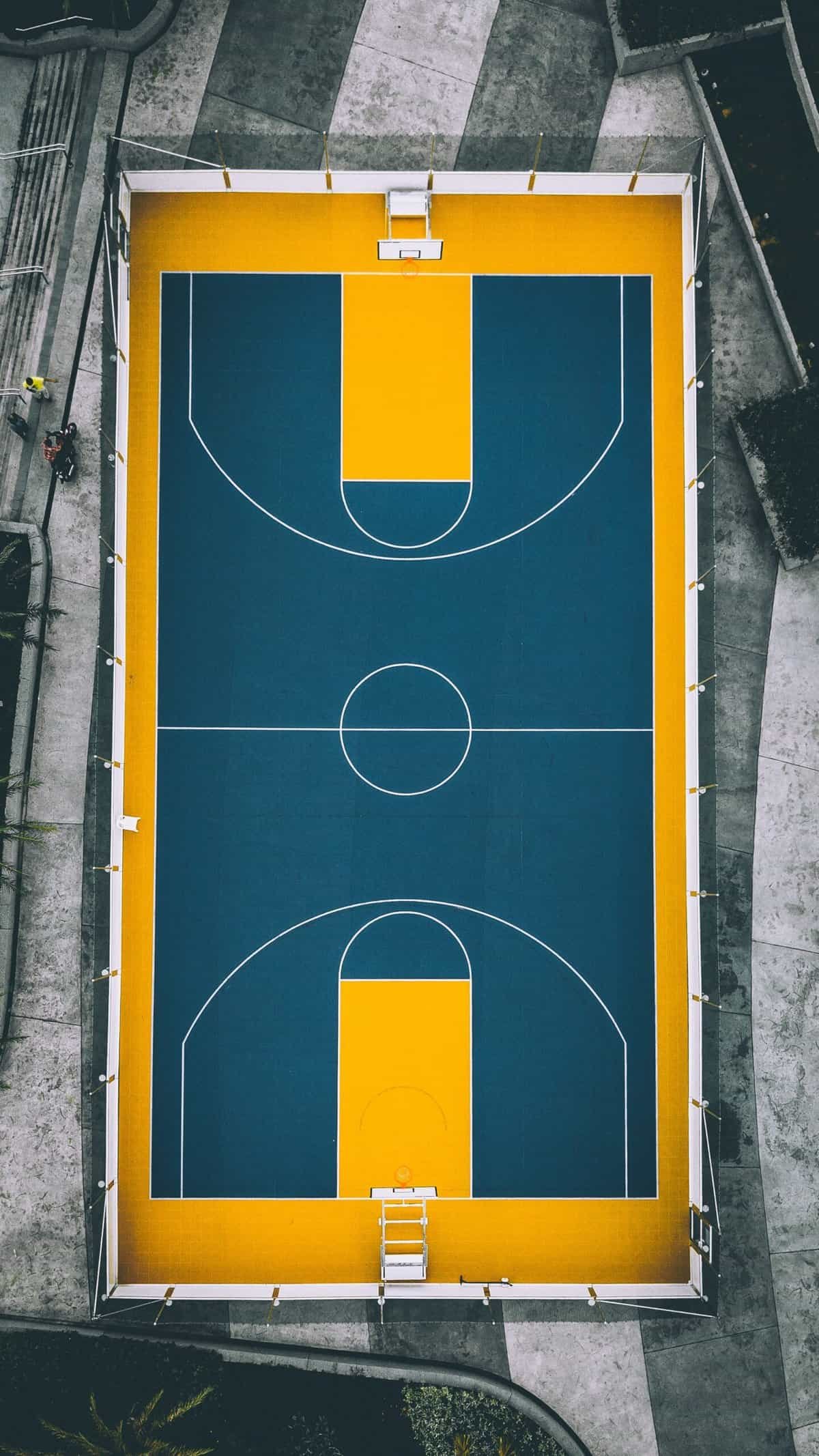If you’re a beginner looking to improve your basketball skills, look no further! In this article, we will explore six highly effective basketball moves that are perfect for those who are just starting out. Whether you’re trying to break free from an opponent’s defense or make a stylish layup, these moves will help you gain the confidence and finesse needed to excel on the court. So grab your sneakers and let’s get started!
1. Dribbling Moves
1.1 Crossover Dribble
The crossover dribble is a fundamental move in basketball that allows you to quickly change direction and deceive your defender. To execute this move, start by dribbling the ball with your right hand if you are right-handed (or vice versa). As you approach your defender, quickly shift the ball from your right hand to your left hand, crossing it over your body. This sudden change of direction can catch your defender off guard, creating an opportunity for you to drive past them and score.
1.2 Between the Legs Dribble
The between the legs dribble is another effective dribbling move that can help you create space between you and your defender. Begin by dribbling the ball with your dominant hand as you approach your defender. Next, step forward with your non-dominant foot and simultaneously bounce the ball between your legs. Quickly shuffle your feet to the other side, allowing you to retrieve the ball with your dominant hand. This move can be used to change direction or set up a drive to the basket.
1.3 Behind the Back Dribble
The behind the back dribble is a flashy move that can leave your defender off balance and create scoring opportunities. To perform this move, start by dribbling the ball with your dominant hand. As you approach your defender, reach behind your back with your non-dominant hand and bounce the ball to that hand. Quickly transition the ball back to your dominant hand, effectively changing direction and leaving your defender surprised. Practice this move to improve your ball-handling skills and add a touch of flair to your game.
1.4 Spin Move Dribble
The spin move is a powerful dribbling technique that allows you to quickly change directions and evade defenders. To execute this move, start by dribbling the ball with both hands as you approach your defender. Plant your pivot foot, then use your other foot to perform a quick spin, turning away from your defender. As you spin, keep your body low and your dribble tight to maintain control of the ball. This move can create space for a jump shot or a drive to the basket.
1.5 Hesitation Dribble
The hesitation dribble is a deceptive move that can confuse your defender and create openings for shots or drives. To perform this move, dribble the ball at a consistent rhythm as you approach your defender. Then, suddenly pause or slow down your dribble for a split second. This hesitation can cause your defender to anticipate your next move or momentarily freeze, giving you an advantage to blow past them for a score. Practice changing the speed and timing of your dribble to perfect this effective move.
2. Shooting Techniques
2.1 Layup
The layup is one of the most fundamental shots in basketball and is essential for any beginner to master. Start by dribbling the ball towards the basket with your dominant hand. As you approach the hoop, take a quick step with your non-dominant foot and jump off that foot while extending your dominant arm towards the basket. Use the backboard to guide the ball into the hoop. Practice this shot from various angles to develop accuracy and consistency.
2.2 Jump Shot
The jump shot is a versatile shooting technique that can be used both inside and outside the paint. To execute a jump shot, start with the ball in your shooting hand, slightly above your head. Bend your knees and jump straight up, extending your shooting arm towards the basket. Release the ball at the highest point of your jump, using a smooth, fluid motion. As you develop your jump shot, focus on your form and follow-through to improve accuracy and increase your shooting range.
2.3 Hook Shot
The hook shot is a valuable weapon for scoring close to the basket, especially when defended by taller opponents. Begin by with your back to the basket and establish position near the low post. Using your non-dominant hand as a guide, bring the ball up towards your shooting hand’s shoulder. Extend your shooting arm and release the ball with a flick of your wrist, aiming for a high-arcing shot that drops softly into the net. Practice this shot with both hands to become a threat from all angles.
2.4 Bank Shot
The bank shot is an effective technique for scoring off the backboard and is frequently utilized when shooting from a difficult angle or under pressure. Position yourself slightly to the left or right side of the basket, depending on the angle you wish to shoot from. As you approach the basket, release the ball towards the backboard at a specific spot that allows it to bounce into the hoop. Develop a sense of touch and precision by practicing this shot from various angles and distances.
2.5 Fadeaway Shot
The fadeaway shot is a move often associated with great players and can be a lethal offensive weapon. Begin by facing the basket and establishing position. Using a quick step back, create space between yourself and the defender. Jump away from the basket while simultaneously leaning back and extending your shooting arm. Release the ball with a high arc, ideally over the outstretched hands of the defender. With practice, you can become proficient in this difficult shot, allowing you to score even when tightly guarded.

3. Passing Skills
3.1 Chest Pass
The chest pass is a fundamental passing technique that allows you to quickly and accurately move the ball to a teammate. To perform a chest pass, hold the ball with both hands at chest level. Step towards your intended target with your non-dominant foot, extend your arms fully, and forcefully thrust the ball straight towards your teammate’s chest. Practice this pass with both hands and varying distances to develop your accuracy and timing.
3.2 Bounce Pass
The bounce pass is a low pass that can be effective when passing through traffic or when your teammate is cutting towards the basket. To execute a bounce pass, hold the ball with both hands, and step towards your target with your non-dominant foot. Drop the ball towards the ground, aiming for a spot slightly in front of your teammate. The ball should bounce once before reaching your intended recipient. Practice this pass to improve your accuracy and the speed of your delivery.
3.3 Overhead Pass
The overhead pass is useful for passing over defenders or when your vision is obstructed. To perform an overhead pass, hold the ball with both hands above your head. Extend your arms fully and snap your wrists forward as you release the ball towards your teammate. This pass should have a high trajectory to clear defenders and reach your intended target. Practice this pass to enhance your accuracy and develop the ability to quickly execute this pass in game situations.
3.4 Baseball Pass
The baseball pass is a long-distance pass that can be effective in fast-break situations or when trying to move the ball quickly up the court. Hold the ball with your dominant hand, using a grip similar to throwing a baseball. Step forward with your non-dominant foot and propel the ball towards your teammate, using a similar motion to throwing a baseball. This pass should be powerful and accurate to reach your teammate quickly. Practice this pass to improve your range and accuracy when making long-distance passes.
3.5 Alley-oop Pass
The alley-oop pass is an exciting and high-flying pass that allows a teammate to catch the ball mid-air and score with a dunk or layup. This pass is often seen during fast breaks or orchestrated plays near the rim. As your teammate approaches the basket, lob the ball high above the rim, allowing them to catch it in mid-air and finish the play. Effective execution of this pass requires timing, coordination, and a good understanding of your teammate’s abilities. Practice this pass with your teammates to develop chemistry and create highlight-reel moments.
4. Offensive Maneuvers
4.1 Pick and Roll
The pick and roll is a popular offensive maneuver that involves one player setting a screen for another player and then rolling towards the basket to receive a pass. This play often confuses defenders and creates scoring opportunities. As the ball handler, use your teammate’s screen to create separation from your defender. If your defender goes under the screen, you can take a jump shot. If they go over the screen, you can drive towards the basket or make a pass to your rolling teammate. Practice this maneuver with your teammates to execute it effectively in game situations.
4.2 Backdoor Cut
The backdoor cut is a deceptive move where an offensive player quickly cuts behind their defender towards the basket to receive a pass. This maneuver catches defenders off guard and can lead to easy scoring opportunities. As the ball handler, signal to your teammate to make a backdoor cut by using a quick head or hand gesture. Time your pass so that it leads your teammate towards the basket, allowing them to catch the ball in stride and score. Practice this maneuver with your teammates to develop chemistry and timing.
4.3 Fast Break
The fast break is a high-paced offensive strategy often used after a turnover or a defensive rebound. In this maneuver, the offensive team quickly moves the ball up the court to create scoring opportunities before the defense has a chance to set up. As the ball handler, push the ball up the court, looking for open teammates or opportunities to drive to the basket. Encourage your teammates to run ahead and fill the lanes, allowing for quick passes and easy scoring chances. Practice this strategy to improve your team’s fast break efficiency and capitalize on transition opportunities.
4.4 Jab Step
The jab step is a simple yet effective offensive move that can create space between you and your defender. To execute a jab step, take a quick step in one direction, either towards your defender or away from them, to give the illusion of a drive or a shot. This slight hesitation often causes your defender to react, allowing you to quickly change direction or take a jump shot. Practice this move to improve your footwork and develop the ability to deceive defenders effectively.
4.5 Post Up
The post-up maneuver is a technique commonly used by taller players or those with a size advantage. In this move, the offensive player positions themselves close to the basket, facing away from the hoop, using their body to shield the defender. As the ball handler, pass the ball into the post and encourage your teammate to establish deep position. The offensive player can then utilize various moves such as a drop step or an up-and-under to score or create opportunities for themselves or their teammates. Practice post moves to enhance your scoring ability in the low post.

5. Defensive Techniques
5.1 On-ball Defense
On-ball defense is the ability to guard your assigned opponent effectively when they have the ball. It involves using proper positioning, active hands, and quick footwork to prevent your opponent from scoring or making a successful play. Focus on staying low, mirroring your opponent’s movements, and maintaining a good defensive stance. Use your hands to contest shots and disrupt passing lanes. By staying disciplined and focused, you can apply pressure and force your opponent into making mistakes.
5.2 Help Defense
Help defense is crucial for a strong team defense. It means providing support to teammates who are being beaten by their opponents. When your teammate is defending the ball and is at a disadvantage, you need to rotate and provide assistance by covering their man or helping to contest shots. Effective help defense requires awareness, communication, and the ability to anticipate plays. By staying engaged and providing support, you can help your team limit scoring opportunities and improve overall defensive performance.
5.3 Box Out
Boxing out is a fundamental defensive technique used to establish rebounding position and prevent offensive players from securing rebounds. When a shot goes up, locate the offensive player you are assigned to and position yourself between them and the basket. Use your body to establish contact and create space, making it difficult for your opponent to crash the boards. Maintain a wide base, keep your hands up, and use your lower body strength to control the rebounding battle. A properly executed box out can give you a significant advantage in securing rebounds.
5.4 Steal
Stealing the ball is a defensive skill that can disrupt the opponent’s offense and create scoring opportunities for your team. To steal the ball, anticipate your opponent’s movements, watch their eyes, and look for opportunities to intercept passes or poke the ball away. As the ball comes close to your opponent’s hand, swipe or reach in with quick hands to knock the ball loose. This requires good hand-eye coordination, quick reflexes, and reading your opponent’s intentions. Developing this skill can make you a valuable asset on the defensive end of the court.
5.5 Shot Block
Shot blocking is a skill that can intimidate opponents and disrupt their scoring attempts. Timing and anticipation are key elements in successfully blocking shots. As the offensive player attempts a shot, jump towards them, extending your arm and hand towards the ball. Aim to block the shot at its highest point to have the greatest chance of success. Avoid fouling the shooter by maintaining good verticality and not making contact with their body. Practice timing your jumps and developing your shot-blocking technique to become a defensive force.
6. Rebounding Fundamentals
6.1 Box Out
As mentioned earlier in the defensive techniques section, boxing out is an essential skill when it comes to rebounding. By effectively boxing out, you can establish positioning and create a rebounding advantage for yourself or your teammates. Remember to locate your opponent, make contact by using your body, and maintain your position between them and the basket. Additionally, putting a body on your opponent creates space for yourself to grab the rebound, improving your chances of gaining possession.
6.2 Positioning
Proper positioning is crucial when it comes to rebounding. Before the shot is taken, anticipate where the ball might bounce off the rim and position yourself accordingly. This requires both court awareness and the ability to read the trajectory of the shot. By positioning yourself correctly, you can get a head start and outmaneuver opponents in securing rebounds.
6.3 Timing
Timing is crucial to winning rebounds. As a player, you must develop the ability to judge when the ball will reach its highest point or where it will land off the rim. This requires practice and experience, as well as the ability to react quickly to the flight of the ball. By timing your jumps and utilizing your athletic ability, you can gain an advantage over opponents and come down with rebounds.
6.4 Footwork
Good footwork is often overlooked but plays a significant role in rebounding. By utilizing quick and precise footwork, you can establish better positioning and react faster to the ball. This includes shuffling your feet, adjusting your body as the ball moves, and being agile on your feet. Practicing footwork drills can enhance your overall rebounding skills.
6.5 Crash the Boards
Crashing the boards refers to aggressively pursuing the ball after a shot is taken. As soon as the ball leaves the shooter’s hands, move quickly towards the basket to either gain possession or position yourself for a potential rebound. This requires hustle, determination, and a never-give-up attitude. By consistently crashing the boards, you can increase your chances of obtaining offensive rebounds and creating second-chance scoring opportunities for your team.

7. Footwork Drills
7.1 Two-Step Drill
The two-step drill is a simple but effective footwork drill that can improve your agility and quickness on the court. Start by standing with your feet shoulder-width apart and knees slightly bent. Then, take two quick steps in one direction, focusing on maintaining balance and staying low. Repeat this drill by taking two steps in the opposite direction. The two-step drill can improve your ability to change direction quickly, which is essential for effective on-court movement.
7.2 Ladder Drill
The ladder drill is a popular footwork drill that can enhance your coordination, speed, and agility. To perform this drill, lay down a ladder-like pattern of cones or markings on the ground. Begin at the starting end of the ladder and quickly step into each box, maintaining a fast pace. Focus on light and quick footwork, lifting your knees high and driving off the balls of your feet. The ladder drill is an excellent way to improve your overall footwork and conditioning.
7.3 Pivot Drill
Pivoting is an essential footwork skill that allows you to maintain your balance and change direction efficiently while avoiding traveling violations. To practice pivoting, start by standing with one foot planted firmly on the ground, your opposite foot slightly raised. Pivot on the ball of your foot in a 360-degree motion, while keeping your other foot stationary. Repeat this drill in the opposite direction to develop both sides of your pivot motion. Pivoting skills are crucial for creating passing lanes, protecting the ball, and executing effective offensive moves.
7.4 Jump Rope Drill
Jumping rope is a classic footwork drill that can improve your coordination, agility, and timing. Begin by holding the jump rope handles in each hand and jumping over the rope as it passes under your feet. Start with a moderate pace and gradually increase your speed and intensity. Focus on staying light on your toes and maintaining a good rhythm. Jump rope drills can be done individually or with a group, making them a versatile and effective workout for footwork development.
7.5 Cone Drill
The cone drill is a versatile footwork drill that can be customized to target specific movements and skills. Set up a series of cones in various patterns on the court. Develop drills that require you to move quickly and efficiently around the cones, incorporating changes of direction, lateral movements, and speed variations. Use the cone drill to simulate game-like situations, such as defending against an opponent’s crossover or navigating around screens. By practicing different cone drills, you can improve your footwork, reaction time, and overall on-court mobility.
8. Offensive Moves
8.1 Drop Step
The drop step is a powerful offensive move used primarily by post players to gain an advantage over their defenders. Begin by establishing position with your back to the basket and your defender behind you. Take a quick step with your non-dominant foot and pivot on it, turning towards the basket and protecting the ball with your body. This move allows you to create separation from your defender and utilize your dominant hand for a strong finish at the rim or a mid-range jump shot.
8.2 Up and Under
The up and under move is an effective technique to deceive a defender and create scoring opportunities. Begin by establishing position near the basket and facing your defender. Take a power dribble towards your defender and then abruptly stop. Feign an upward shooting motion, causing your defender to jump or leave their feet. As they do, quickly duck under their outstretched arms and either lay the ball up or take a close-range shot uncontested. This move relies on your ability to sell the fake and your agility to evade defenders.
8.3 Step Back
The step back move is a popular offensive maneuver that creates space between you and your defender for a jump shot. Begin by dribbling towards your defender as if you are going to drive to the basket. Plant your non-dominant foot and quickly step back with your dominant foot, creating separation. This sudden change in direction allows you to create room for a comfortable jump shot. Develop this move with practice to increase your scoring options and keep defenders guessing.
8.4 Euro Step
The Euro step is a versatile offensive move that can be effective in crowded areas or when faced with a shot-blocking threat. As you drive towards the basket, take a step in one direction, making it appear as if you are going to continue that way. However, before making contact with the defender, quickly plant your non-dominant foot and step to the other side, allowing you to avoid contact and create an open lane to the basket. The Euro step combines quick footwork, body control, and deception to create scoring opportunities.
8.5 Floater
The floater is a finesse offensive move typically used when driving into the lane and facing taller defenders. As you approach the basket, take a quick dribble or two and then elevate for a jump shot. Release the ball with a high arc, aiming for it to softly drop into the basket. The floater is effective because it allows you to shoot over taller defenders while avoiding their shot-blocking abilities. Practice this shot from different distances and angles to become proficient at executing the floater in game situations.

9. Defensive Drills
9.1 Shell Drill
The shell drill is a fundamental defensive drill that focuses on positioning, communication, and defensive principles. Set up four players in a shell formation, with one player positioned on each wing and one player in the low post area. The fifth player acts as the offensive player with five seconds to shoot. The offensive player tries to score while the defensive players focus on maintaining correct positioning, providing help defense, and effectively communicating switches and rotations. The shell drill helps improve team defense and teaches players to work together as a cohesive unit.
9.2 Closeout Drill
The closeout drill is designed to improve defensive skills when closing out on an offensive player. Begin by positioning yourself in the center of the key or near the three-point line. When the coach or teammate yells “go,” sprint towards the offensive player on the perimeter, maintaining a low, athletic stance. Once you are within arm’s length of the offensive player, focus on maintaining good balance, using active hands to contest shots, and staying in front of your opponent without fouling. This drill helps improve defensive speed, technique, and the ability to guard against outside shots.
9.3 Deflect and Recover
The deflect and recover drill helps players develop quick hands and agility in defensive situations. Begin by pairing up with a teammate and standing about an arm’s length apart. One player holds the ball while the other player aims to deflect the pass and recover back into a defensive position. The player with the ball should focus on making crisp, accurate passes while the other player attempts to disrupt the pass with a quick hand movement. This drill helps improve hand-eye coordination, defensive reaction time, and the ability to disrupt passing lanes.
9.4 Charge Drill
The charge drill helps players learn how to take charges effectively and safely. Start by dividing the players into two groups, one group serving as the offensive players, and the other group as the defenders. The offensive players take turns driving towards the basket while the defenders rotate and attempt to draw charges by establishing proper defensive positioning. This drill emphasizes the importance of body control, positioning, and the willingness to sacrifice your body to draw a charge. Proper technique and timing are essential to successfully execute this defensive maneuver.
9.5 Stance and Slide
The stance and slide drill is a fundamental defensive exercise that helps players develop proper defensive stance and lateral quickness. Start by assuming a low defensive stance, with your knees bent and your feet shoulder-width apart. Move laterally along the court, making quick, controlled steps while keeping your balance and staying low to the ground. Maintain a wide base and focus on moving your feet quickly and efficiently. This drill helps improve defensive positioning, footwork, and overall on-ball defense.
10. Basic Basketball Concepts
10.1 Setting Screens
Setting screens is a fundamental aspect of team offense that can create scoring opportunities for teammates. By establishing a solid, legal screen, you can impede the progress of defenders and open up passing lanes or driving lanes for your teammates. Focus on making contact with the defender and holding your ground, allowing your teammate to either use the screen to shoot or drive off of it. Proper communication, timing, and positioning are key elements in setting effective screens.
10.2 Help and Recover
Help and recover refers to the defensive strategy of providing assistance to a teammate who is guarding an offensive player. When your teammate is beaten by their opponent, it is your responsibility to rotate and provide support by covering their man or helping to contest shots. After helping, quickly recover back to your original assignment once the threat is no longer present. Help and recover requires good communication, awareness, and the ability to make quick decisions on defense.
10.3 Communication
Communication is vital in basketball, as it allows teammates to coordinate their efforts, make quick decisions, and establish effective strategies. On offense, communication is needed to call plays, initiate pick-and-rolls, and signal for passes. On defense, it helps teammates switch assignments, call out screens, and provide help defense. Develop good communication skills by actively talking on the court, using clear and concise language to relay information to your teammates.
10.4 Reading Defense
Reading the defense is an essential skill that allows players to make quick, intelligent decisions on offense. By observing how defenders are positioned, reacting to their movements, and understanding defensive rotations, you can identify weaknesses and exploit opportunities. Develop basketball intelligence by studying game footage, paying attention to details, and analyzing opponents’ defensive strategies. The ability to read defense effectively can significantly enhance your overall offensive performance.
10.5 Court Awareness
Court awareness refers to a player’s ability to understand the spatial relationships, positions, and movements of themselves, teammates, opponents, and the ball on the basketball court. Having good court awareness allows you to make intelligent decisions, anticipate plays, and exploit open spaces. Improve your court awareness by actively scanning the court, developing a sense of spacing, and understanding the flow of the game. By staying aware of your surroundings, you can become a more complete and impactful player.
In conclusion, mastering these basketball moves, techniques, skills, maneuvers, and concepts can take your game to the next level. Whether you are a beginner or an experienced player, it is important to practice and hone these skills regularly. Keep in mind that basketball is a team sport, and effective communication, coordination, and collaboration with your teammates are key to success. With dedication, hard work, and a friendly attitude, you can become a well-rounded and skilled basketball player.


